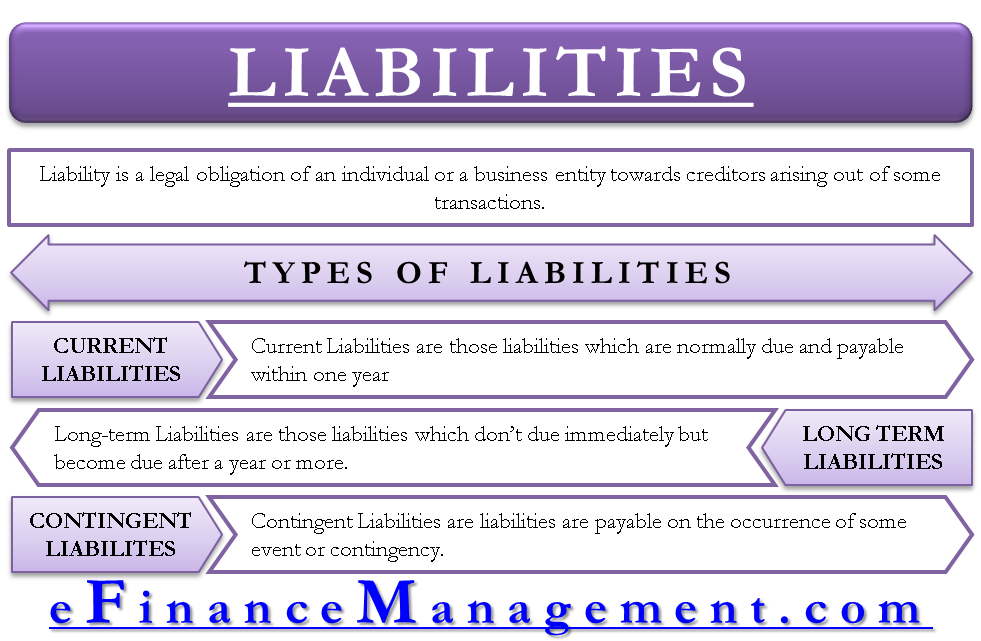Liabilities: Definition
Liability is a legal obligation of an individual or a business entity towards creditors arising out of some transactions. A clearer definition of liability signifies it as a claim by the creditors against the assets and legal obligations of an individual or entity resulting from past or current transactions and events. Let us look at the various types of liabilities.
Types of Liabilities
Liabilities imply a duty or responsibility to pay on-demand or on an occurrence of a certain transaction or event. Liabilities also arise from borrowings which may be for business improvement or personal income. One has to pay these back over an agreed period of an interval. The time period of liability payment can be shorter or longer.
The left-hand side of the Balance Sheet states all the liabilities. Just like assets, there is a sequential representation of the Balance Sheet. Liabilities are grouped and classified according to their nature and time period. Some common types of liabilities include current liabilities, long-term liabilities, and contingent liabilities.
Current Liabilities or Short-term Liabilities
Current Liabilities are those liabilities that are normally due and payable within one year. Another word for these liabilities is short-term liabilities, which become due within a shorter period (say within 1 year).
Also Read: Short-term Liabilities
Examples of Current or Short-term Liabilities
- Creditors
- Salaries and wages payable
- Gratuity or bonus payable
- Interest payable
- Bills payable
- Sundry creditors
- Bank overdraft or cash credit
- Unclaimed dividends
- Pre-received income
- Unearned revenue
- Sales tax payable
- Income tax payable
- Deferred revenues
- Provisions
- Other taxes payable
- Accrued expenses
- Installments due within 1 year for term loans, etc.
Also read – Debt vs Liabilities.

Long-Term Liabilities
Long-term Liabilities are those liabilities that don’t due immediately but become due after a year or more.
Examples of Long-term Liabilities
- Term loans
- Debentures
- Deferred tax liabilities
- Mortgage liabilities (payable after 1 year)
- Lease payments
- Interest, if payable on maturity
Contingent Liabilities
Certain liabilities are payable on the occurrence of some event or contingency. Contingency signifies something which may or may not take place. If liability is due to the happening of such an event, it is termed a contingent liability. Calculation of such liabilities is on the basis of “what if the actual loss occurs” where ever possible and with an addition of a notional calculation of damage that occurred to the person or entity. Generally, we don’t include these liabilities in the Balance Sheet. We separately mention them as a note to the balance sheet.
Examples of Contingent Liabilities
- Default in supply
- Breach of contract
- Damage to the environment
- Damage to the prestige of some person or entity
- An outcome of accidents and other law-suits
These are some examples of where liability can occur.
Continue reading Calculation of Liabilities from Balance Sheet.
Quiz on Meaning and Types of Liabilities
This quiz will help you to take a quick test of what you have read here.


Is the risk of losing the lease to property used for retail a liability for that business